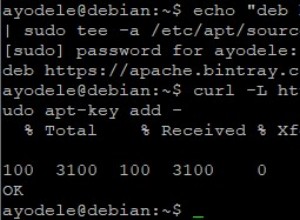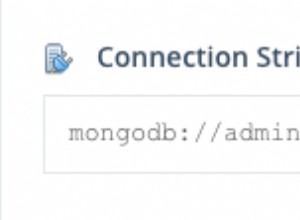Tôi đã triển khai kiểu đặc biệt để đổi tên trường tùy ý trong MongoDB. Đây là nó:
using System.Linq;
using MongoDB.Bson;
using MongoDB.Driver;
namespace DatabaseManagementTools
{
public class MongoDbRefactorer
{
protected MongoDatabase MongoDatabase { get; set; }
public MongoDbRefactorer(MongoDatabase mongoDatabase)
{
MongoDatabase = mongoDatabase;
}
/// <summary>
/// Renames field
/// </summary>
/// <param name="collectionName"></param>
/// <param name="oldFieldNamePath">Supports nested types, even in array. Separate nest level with '$': "FooField1$FooFieldNested$FooFieldNestedNested"</param>
/// <param name="newFieldName">Specify only field name without path to it: "NewFieldName", but not "FooField1$NewFieldName"</param>
public void RenameField(string collectionName, string oldFieldNamePath, string newFieldName)
{
MongoCollection<BsonDocument> mongoCollection = MongoDatabase.GetCollection(collectionName);
MongoCursor<BsonDocument> collectionCursor = mongoCollection.FindAll();
PathSegments pathSegments = new PathSegments(oldFieldNamePath);
// Rename field in each document of collection
foreach (BsonDocument document in collectionCursor)
{
int currentSegmentIndex = 0;
RenameField(document, pathSegments, currentSegmentIndex, newFieldName);
// Now document is modified in memory - replace old document with new in mongo:
mongoCollection.Save(document);
}
}
private void RenameField(BsonValue bsonValue, PathSegments pathSegments, int currentSegmentIndex, string newFieldName)
{
string currentSegmentName = pathSegments[currentSegmentIndex];
if (bsonValue.IsBsonArray)
{
var array = bsonValue.AsBsonArray;
foreach (var arrayElement in array)
{
RenameField(arrayElement.AsBsonDocument, pathSegments, currentSegmentIndex, newFieldName);
}
return;
}
bool isLastNameSegment = pathSegments.Count() == currentSegmentIndex + 1;
if (isLastNameSegment)
{
RenameDirect(bsonValue, currentSegmentName, newFieldName);
return;
}
var innerDocument = bsonValue.AsBsonDocument[currentSegmentName];
RenameField(innerDocument, pathSegments, currentSegmentIndex + 1, newFieldName);
}
private void RenameDirect(BsonValue document, string from, string to)
{
BsonElement bsonValue;
bool elementFound = document.AsBsonDocument.TryGetElement(from, out bsonValue);
if (elementFound)
{
document.AsBsonDocument.Add(to, bsonValue.Value);
document.AsBsonDocument.Remove(from);
}
else
{
// todo: log missing elements
}
}
}
}
Và loại trình trợ giúp để giữ các phân đoạn đường dẫn:
using System;
using System.Collections;
using System.Collections.Generic;
using System.Linq;
namespace DatabaseManagementTools
{
public class PathSegments : IEnumerable<string>
{
private List<string> Segments { get; set; }
/// <summary>
/// Split segment levels with '$'. For example: "School$CustomCodes"
/// </summary>
/// <param name="pathToParse"></param>
public PathSegments(string pathToParse)
{
Segments = ParseSegments(pathToParse);
}
private static List<string> ParseSegments(string oldFieldNamePath)
{
string[] pathSegments = oldFieldNamePath.Trim(new []{'$', ' '})
.Split(new [] {'$'}, StringSplitOptions.RemoveEmptyEntries);
return pathSegments.ToList();
}
public IEnumerator<string> GetEnumerator()
{
return Segments.GetEnumerator();
}
IEnumerator IEnumerable.GetEnumerator()
{
return GetEnumerator();
}
public string this[int index]
{
get { return Segments[index]; }
}
}
}
Để phân tách các cấp độ tổ, tôi sử dụng dấu '$' - dấu hiệu duy nhất bị cấm đối với tên bộ sưu tập trong mongo. Cách sử dụng có thể giống như sau:
MongoDbRefactorer mongoDbRefactorer = new MongoDbRefactorer(Mongo.Database);
mongoDbRefactorer.RenameField("schools", "FoobarTypesCustom$FoobarDefaultName", "FoobarName");
Mã này sẽ tìm thấy trong bộ sưu tập schools FoobarTypesCustom tài sản. Nó có thể là kiểu phức tạp như mảng. Sau đó, sẽ tìm thấy tất cả FoobarDefaultName thuộc tính (if FoobarTypesCustom là mảng thì nó sẽ lặp qua nó) và đổi tên nó thành FoobarName . Mức lồng và số mảng lồng nhau không có vấn đề gì.




